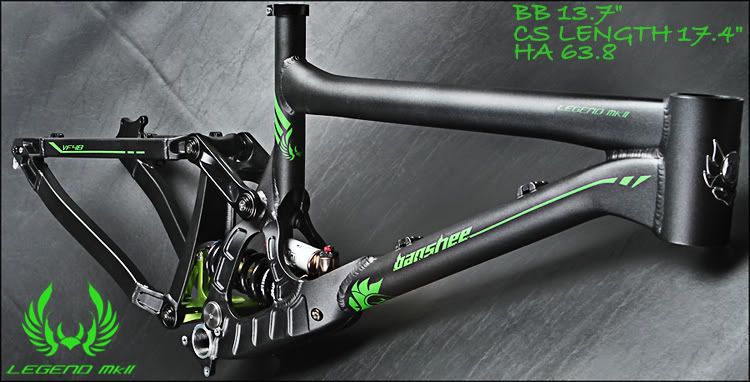2014 BLUEGRASS ENDURO TOUR DUBLIN-Djouce Mountain
 Tuesday, August 19, 2014 at 6:56PM
Tuesday, August 19, 2014 at 6:56PM The 4th round of the Bluegrass Enduro Tour in Dublin-Djouce mountain this week end was run over two races: the men's race was on Sunday, and the other reserved for women, on the same track was held the day before. A world first, and a dream opportunity for novices to take part in their first Enduro; in a relaxed atmosphere against an idyllic background.
In Dublin, Bluegrass and the local organiser Biking.ie had put on a great sporting spread offering participants a course made up of magnificent trails around the Irish capital city, starting and finishing at the spectacular Powerscourt waterfall. The number of participants had intentionally been limited to 50 lucky riders due to logistical constraints involved when organising a race over three different locations around Dublin all on the same day.
Two 'fun' days of full on competition with all the ingredients which make the Bluegrass Enduro Tour such a great success. Impeccable organisation, a brilliant atmosphere, and, in keeping with tradition, no one is allowed to ride the course in advance of the race.
The day started with breakfast at the base of the waterfall, before setting off by bus towards Ticknock.
Once all the bikes had been unloaded from the trailers, the riders set off on a 2km liaison climb to the first start line of the day. The fabulous view over Dublin Bay was enough to have made the trip worthwhile.
Special 1
There was a highly technical section through the forest which required frequent short spurts, then further along a very fast section, and finally, just before the finish, a hard climb - with such a lot of energetic pedalling, the competitors were immediately in full swing.
Women's race
Michelle Muldoon clocked the best time in front of the German rider Hannah Roether who was less than 3 seconds behind. It had been a really close fight.
Men's race
Daniel Wolfe straight away took the lead. The real surprise was New Zealander Reon Boe who clocked up the second fastest time on his DH bike!
This appetizer boosted the riders' moral. They took on the following 2km liaison climb with a smile!
Special 2
The rapid pace allowed the best to absorb the bumps on the ground almost without losing speed. For the rest, the day was going to be longer and tougher!
Women's race
Michelle Muldoon was once again the fastest just ahead of Hannah Roether.
Juliet Elliott, the English ambassador of fixed gear, came in 5th which is promising as it was her very first Enduro.
Men's race
Daniel Wolfe was the fastest, but hot on his heels came Pearse Griffin who was up for contesting his supremacy.
Another shuttle took the competitors up to Ballinastoe for a lunch break. Pasta salad and sandwiches were on hand to recharge the riders' batteries before taking the shuttle bus then pedalling 1km to the next start line.
Special 3
A new landscape, the backdrop of flower carpeted hills and lakes almost made you forget the difficulties of the track which was very technical right from the start, followed by a good minute or two of pedalling before taking on a long section where you could pick up speed right up to the finish line.
Women's race
With the fastest time in the first three specials of the day, Michelle Muldoon was well set for final victory.
Men's race
Daniel Wolfe was once again first and seemed to be untouchable. The fight for a place on the podium was going to be tough.
3km of climb later...
Special 4
The longest of the day. A mixture of highly technical sections and other faster sections scattered with jumps, then long sections of pedalling and a fast final section. Enough to make even the most resistant riders tap into their energy reserves.
Women's race
After a disastrous start (18th in Special 1), Orla Mclean gave the other race favourites something to think about by coming in first in the 4th Special.
Men's race
All the Specials were closely fought races - amongst the junior riders, Conor Lavalle seemed to finally get the better of his rivals.
Refuelling with bananas and cold drinks was very welcome before the 5km liaison which took the riders from Ballinastoe to Djouce.
Special 5
The shortest of the day. The course started off fast, then there a short sharp climb once again but the riders' bodies to the test, the end of the race which was faster was nothing short of pure pleasure.
Women's race
The best time was once again made by Michelle Muldoon followed by German Hannah Roether less than 3 seconds later.
Men's race
Just as in the Special before, Jonathan Maunsell had the second best time behind Daniel Wolfe.
One last effort, a 2km liaison which consisted of a fast climb took the competitors to the start of the final race.
Special 6
Without a doubt, this was the most technical – lots of roots, tight bends where it was difficult to keep up speed, then a really fast downhill section through the forest before the final sprint for the finish.
Women's race
A victory (of honour) for Orla McClean in the last special as the overall victory was Michelle Muldoon's in 33'11". German rider, Hannah Roether a regular on the Bluegrass Enduro Tour, took 2nd place with a time of 35'34". Consistent throughout the day, Kate Fluker, New Zealand's XC national champion, took the third place on the podium with a time of 36'31".
Men's race
A flawless race for Daniel Wolfe who led throughout with a time of 25'43" ahead of New Zealander Reon Boe, who recently came 3rd in the Megavalanche, with 27'02". Pearse Griffin, with a time of 27'15" completed the podium.























